

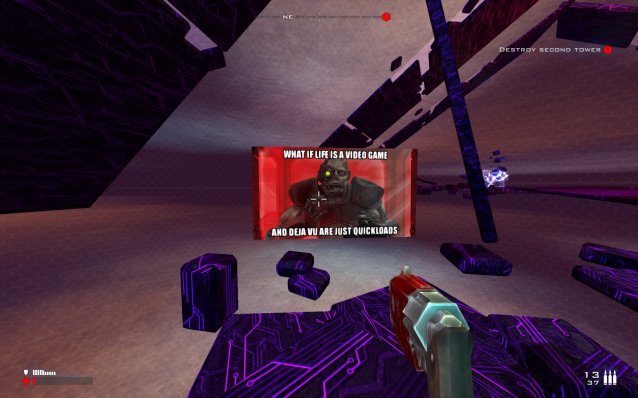
Video games have aged to the point that they now routinely reference their own history – think of the Chozo statues in Guacamelee doing homage to Metroid, or The Binding of Isaac’s many nods to The Legend of Zelda.
Bedlam, a new game from studio RedBedlam, isn’t just doing homage to its forebears, though – it’s a journey through about 15 years of first-person shooter history. It’s a tie-in to a novel of the same name by Scottish author Christopher Brookmyre, and it stars a woman who goes to work one day and ends up caught between worlds in classic-style FPS games.
“One of the starting points for the game,” Brookmyre told me, “was that first console command we’d put in [in Doom or Quake]: the ‘no clip’ hack.”
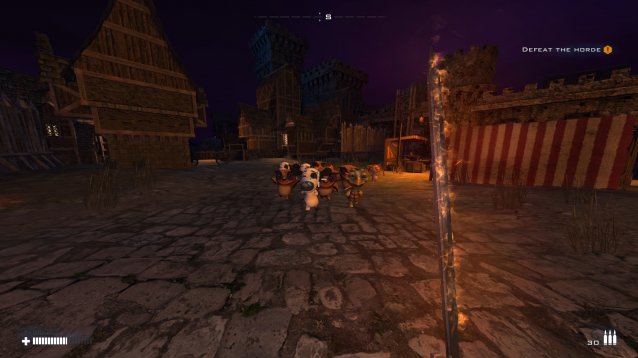
For the younger crowd, “noclip” cheats turned off an engine’s clipping, allowing players to walk through walls and outside the level.
“That way, you could see that maps are kind of floating in space,” Brookmyre said. He said that perspective led him to imagining that these floating maps might be connected somehow.
In Bedlam, that’s a core concept – beginning in a Quake-style ‘90s shooter, you eventually discover “glitches” that allow you to travel between game worlds. In between them, there are floating fragments of levels that have coalesced enough to allow passage from one game glitch to another.
Protagonist Heather Quinn (voiced by Scottish actress Kristy Strain) adapts to her new surroundings quickly.
“She has played games and has developed a bit of an edge,” Brookmyre said. Indeed, Quinn, who goes by the online tag “Athena,” grumbles aloud about “stupid NPCs” and the various FPS tropes (and there are a lot of them) that pop up throughout the game. Brookmyre said some of the inspiration for this came from Portal: “There’s that moment in Portal where you see through the cracks, and you realize things aren’t as tidy as they seem.”

Bedlam plays just like shooters of old – you skate at high speeds through levels, circle-strafing enemies and even performing the occasional rocket-jump. There are countless name-checks of and references to familiar franchises, from Quake and the original Call of Duty to Halo and Planetside 2. There’s a certain amount of jankiness in the level design and AI, but RedBedlam says it’s all meant to evoke the games that form the backdrop and fabric of the story.
“We didn’t want to do retro just for retro’s sake,” Brookmyre said. “We’ve found older gamers tend to feel right at home,” he explained, but added with a chuckle, “Younger gamers are like, ‘this looks terrible.’ But we hope it can serve as a bit of a history lesson.”
Brookmyre’s own experience with first-person games began with 3D Monster Maze, one of the first first-person games ever made for home computers. But he wound up playing the old id Software shooters years later.
“We didn’t have online lobbies or anything then,” he said. “We had to take a look under the hood a bit, and almost create the technology we use today.”
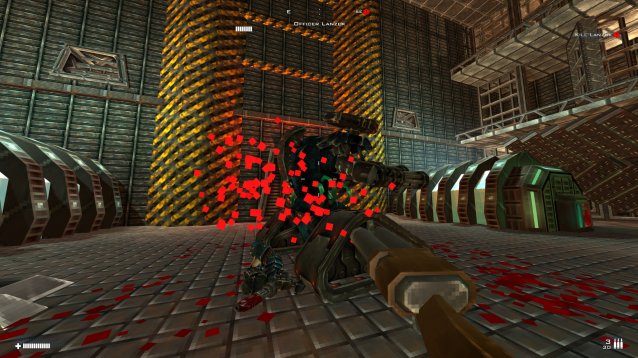
The idea for the game came in 2010, and Brookmyre said he approached the developers around then to pitch the idea of a game that tied in with a novel. He began writing the book, which was published in early 2013 and earned positive reviews. That helped generate more funding for the game, which came out of Early Access on Steam October 13.
I asked Brookmyre about making the leap from writing novels to writing scripts for games, and incorporating player choice into stories, and his answer surprised me.
“The FPS is the genre that most lends itself to narrative,” he said. He explained that while you’re exploring and discovering level layouts, it’s fairly easy for designers to guide you in a specific direction, picking up story beats in the proper sequence. But there’s a balance to be struck, he said, because you do want players to genuinely feel a sense of discovery along the way.
I spent around five hours playing through Bedlam, and it’s an enjoyable ride for someone like me who remembers setting up Quake 2 matches over IRC after saving up for my first 3DFX Voodoo card way back when. It’s smartly-written and funny, which makes it easier to forgive a certain amount of bumpiness and weirdness.
Bedlam was developed by RedBedlam in association with Standfast Interactive and published by KISS Ltd. It was released October 13, 2015 for PC, Mac, and PlayStation 4. A copy was provided by the publisher.


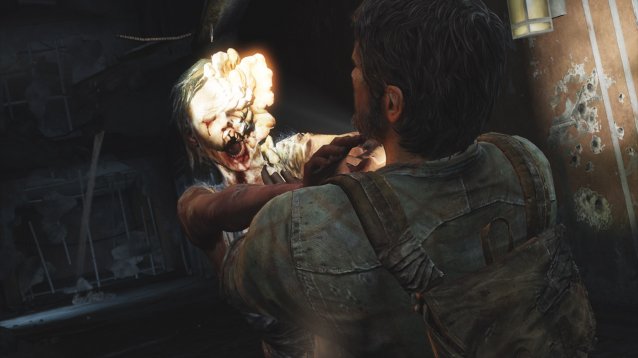

 MacBook Not Charging? Troubleshooting Laptop Power Problems
MacBook Not Charging? Troubleshooting Laptop Power Problems 5 Diet and Nutrition Apps You'll Actually Use
5 Diet and Nutrition Apps You'll Actually Use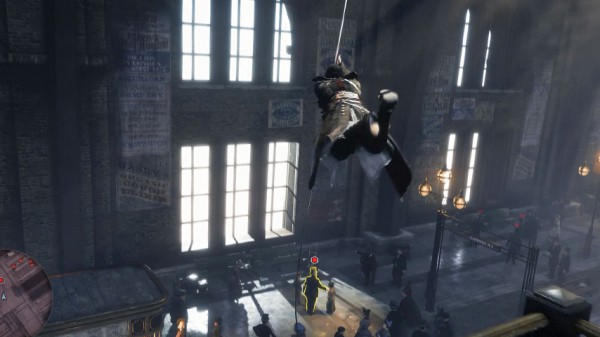 Sequence 7 - Playing Politics and The Bodyguard: Assassin's Creed: Syndicate Walkthrough
Sequence 7 - Playing Politics and The Bodyguard: Assassin's Creed: Syndicate Walkthrough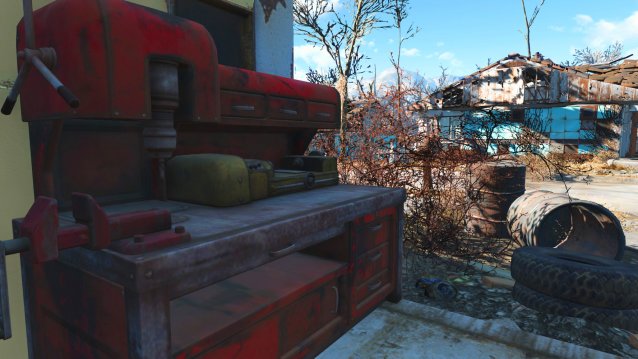 Fallout 4: Settlements Guide - How to Build The Best Settlements
Fallout 4: Settlements Guide - How to Build The Best Settlements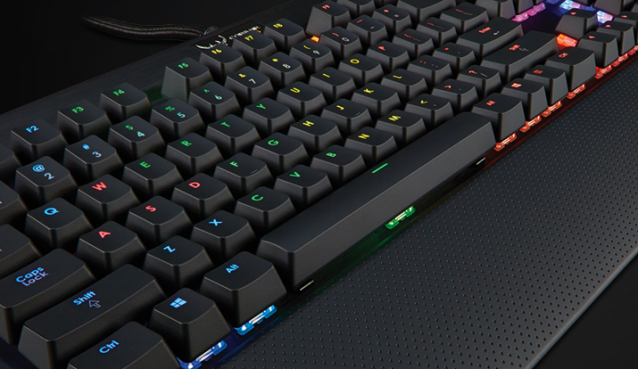 Review: Corsair K70 RGB and M65 RGB
Review: Corsair K70 RGB and M65 RGB